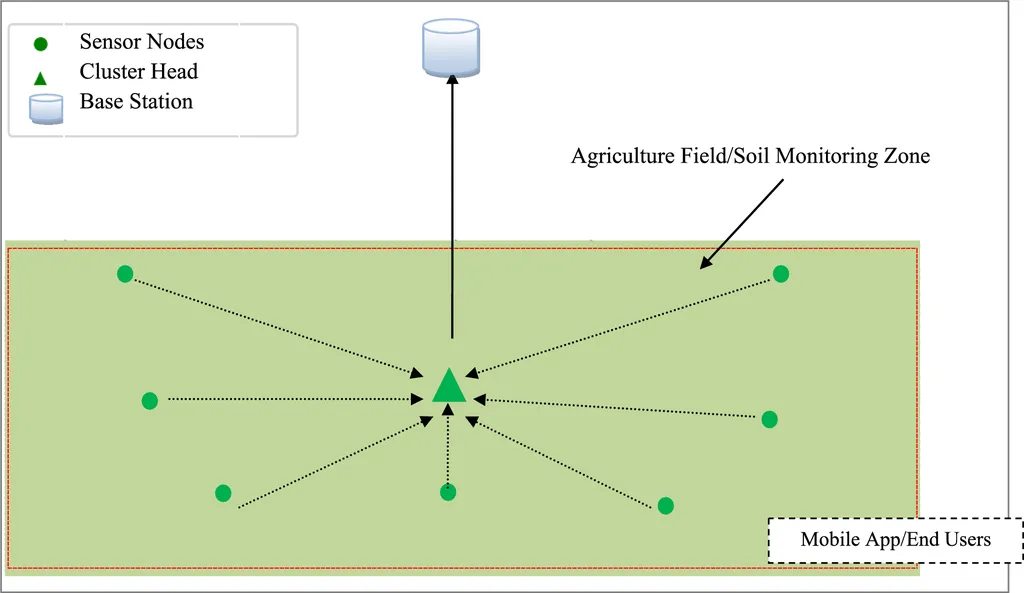In the heart of every precision agriculture system lies a silent, unseen network of sensors working tirelessly to monitor soil health. These Wireless Sensor Networks (WSNs) are the backbone of modern farming, yet they face a significant challenge: energy efficiency. With sensor nodes often powered by limited energy sources, the quest for prolonged network lifetime and consistent data transmission has been an ongoing battle. Enter EECH-HEED, a groundbreaking adaptive hybrid clustering protocol developed by Shinder Kaur from the Department of Computer Engineering and Technology at Guru Nanak Dev University, which promises to revolutionize soil monitoring in heterogeneous WSNs.
The innovation lies in EECH-HEED’s dual-zone architecture. “We’ve created a system that adapts to the environment in real-time,” explains Kaur. “Zone 1, closer to the base station, uses a HEED-based mechanism for cluster head selection, considering both residual energy and communication cost. Zone 2, farther from the base station, employs an enhanced EECH-based hierarchical multi-hop clustering strategy.” This adaptive strategy is a game-changer, significantly reducing energy consumption and extending the operational lifespan of sensor nodes.
Unlike traditional threshold-based hybrid clustering approaches, EECH-HEED introduces dynamic threshold-based sensing. “Our model continuously adjusts hard and soft thresholds based on environmental change rates and node energy levels,” Kaur elaborates. “This adaptability is key to minimizing energy consumption and maximizing network performance.”
The results speak for themselves. Rigorous MATLAB simulations over 5000 rounds on a heterogeneous WSN setup inspired by real agricultural scenarios showed marked improvements. EECH-HEED achieved a 33% reduction in Total Energy Consumption (TEC), a 15% increase in Packet Delivery Ratio (PDR), and a nearly 50% reduction in control overhead. It also recorded the lowest End-to-End Delay (190 ms) and the highest number of alive nodes by the end of the simulation.
The commercial implications for the energy sector are substantial. With energy efficiency at the forefront, EECH-HEED could lead to significant cost savings and improved sustainability in precision agriculture. The protocol’s scalability and low overhead make it an attractive solution for large-scale farming operations, paving the way for more intelligent and efficient soil health monitoring systems.
As we look to the future, the integration of EECH-HEED with UAV-based data collection systems and IoT platforms could further enhance its capabilities. “This could support intelligent farming infrastructures, making precision agriculture even more precise and efficient,” Kaur envisions. Published in the journal ‘Scientific Reports’ (translated to English as ‘Scientific Reports’), this research marks a significant step forward in the field of agritech, promising to shape the future of sustainable soil monitoring.
In an era where energy efficiency and sustainability are paramount, EECH-HEED stands out as a beacon of innovation. Its adaptive, energy-aware clustering strategy not only addresses the challenges of heterogeneous WSNs but also opens up new possibilities for the energy sector. As we continue to push the boundaries of technology, protocols like EECH-HEED will be instrumental in driving progress and shaping the future of precision agriculture.

